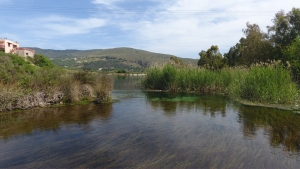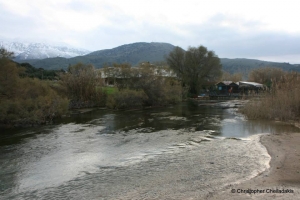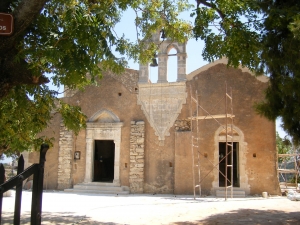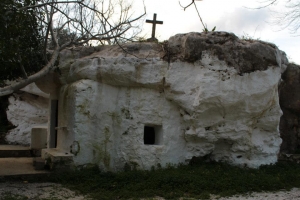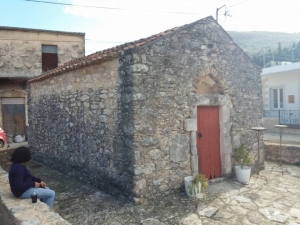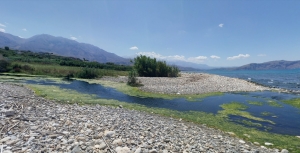The lake and the river Almyros in the area of Georgioupolis form one of the most important wetlands of western Crete. In the lake, we find many aquatic birds and aquatic plants like reeds, myrtles, and oleanders. The lake is natural and is watered by the water of the White Mountains. The bank has been formed in order to assist in the operation of a small 300kW hydroelectric power station.
Perastikos has a large quantity of water although it is formed very close to the shore. Along its short, 50m-long course, it forms a very important wetland that hosts several bird species. Near its source, there is a bridge connecting both sides of the beach.
The church of Saint George at Kournas is one of the most important surviving Byzantine Monuments of Crete. It is built in a prominent position with panoramic views of the sea and probably operated as a monastery, and there are some traces of monk cells.
The chapel of Agia Paraskevi is accessed via the road leading to Episkopi, Rethymno, from Dramia village, Apokoronas. It is a very small cavernous rock built at the west bank of Mouselas river, that starts from Argiroupoli springs. It is a weird chapel, with irregular sides, with a unique shape in Crete.
The church of Saint Nicholas (Agios Nikolaos) Maziotis is located in the village of Maza, province of Apokoronas. It is a small single naved arch-roofed temple dating back to the 13th century. Its interior has impressive frescoes by the famous hagiographer of western Crete, Ioannis Pagomenos, who is believed to be buried on the floor of the temple.
The river Mouselas flows through the valleys that form east of the White Mountains and flow into the western boundary of the large beach of Episkopi, in the large bay of Almyros that has the most rivers in Crete. It is the natural border of the prefectures of Chania and Rethymno.
- 1
- 2
















